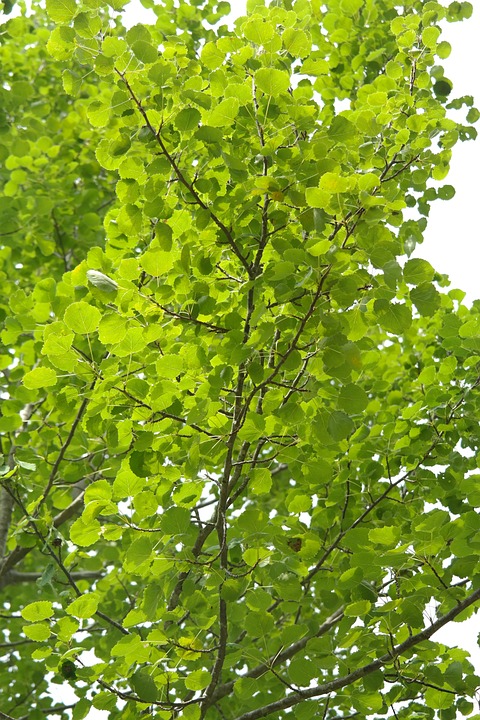Ask an Expert: How to Keep Your Aspen Trees Happy
 In the wild, aspen are among the most beautiful trees with their almost snow-white trunks, shimmering leaves and yellow fall color. Because of these qualities, many homeowners have planted them, but have then watched mature trees die quickly. Unfortunately, aspens often struggle and are short lived, living anywhere from 5 to 15 years when outside their native habitat. When planted around homes, they are more susceptible to insect/disease problems and nutrient deficiencies from stress caused from being away from their native habitat. Consider these tips for aspen care.
In the wild, aspen are among the most beautiful trees with their almost snow-white trunks, shimmering leaves and yellow fall color. Because of these qualities, many homeowners have planted them, but have then watched mature trees die quickly. Unfortunately, aspens often struggle and are short lived, living anywhere from 5 to 15 years when outside their native habitat. When planted around homes, they are more susceptible to insect/disease problems and nutrient deficiencies from stress caused from being away from their native habitat. Consider these tips for aspen care.
• Aspens form surface roots and primarily propagate by sending out root suckers that form new trees connected to the mother plant. Both of these qualities make mowing around them difficult. Fortunately, aspens do not usually grow large enough to damage foundations or cement, due to their short lifespan. One possible solution to contain roots is to surround the rootball of newly planted trees with a cement or rust-proof metal ring 3 to 4 feet beyond the root system and about 2 feet deep. Another is the use of products such as Sucker Stopper that are sprayed on newly cut suckers. They are intended to slow or prevent sucker formation from the spot where it is sprayed. This control method is not perfect, however, and is only good for one season. The spray can cost $20 to $60 per bottle, depending on the concentration.
• Columnar Swedish aspen is similar to our native species but taller and narrower when mature. It is relatively new to the landscape and seems to send fewer root suckers. However, it is still susceptible to pests and diseases like the native aspen and can decline rather quickly.
• Even with the limitations aspen have, they can still be used in moderation in the landscape if managed properly. It is important to plant trees in a location where suckering will not be a problem such as landscape beds that are well away from turf areas. Aspens can be enjoyed as long as they are healthy and then cut down when they begin to decline. Younger trees, formed by root suckers, will quickly mature and sustain the stand. These trees should be watered to a depth of 2 feet every 2 to 4 weeks. It is not recommended that trees be overly treated with chemicals when problems occur regularly. Homeowners can easily spend more money on pesticides than the purchase price of a replacement tree.
• Trees to consider as replacements for aspen include chanticleer/Cleveland pear, Queen Elizabeth maple, Tatarian maple, black alder, various crabapples and Sargent cherry. These trees don’t look exactly like aspens but have their own ornamental qualities, are usually much less susceptible to pests and diseases and are much longer lived.
By: Taun Beddes, taun.beddes@usu.edu, Utah State University Extension Horticulturist


 Utah 4-H & Youth
Utah 4-H & Youth